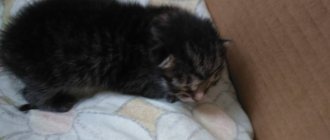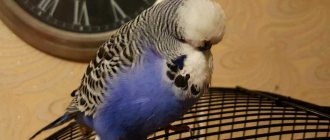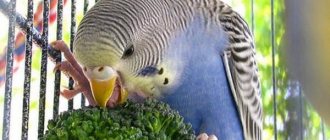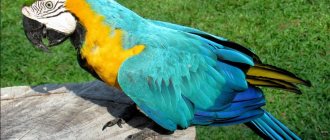Does a parrot need a mate?
The wavy, like any member of the Parrot family, is very important to communicate. In its natural environment, this bird spends its life in a flock of its own kind, calling to each other, flying from tree to tree in search of food. Such is the character of this creature - it is inquisitive, active, playful.
Does a budgie need a mate?
However, it is not so uncommon for a parrot to live alone at home. As a rule, he gets along well with the person who is nearby. Especially if he talks to him, lets him fly around the room, tries to establish contact, tame him and generally spends most of his time nearby.
And if the owner one day suddenly realizes how much his feathered friend misses his own kind, and decides to find him a mate, it is not at all a fact that the union will work out. Accustomed for several years to communicate only with humans, the bird can receive a stranger warily and unfriendly. Jealousy and subsequent fights are not excluded.
However, this does not always happen. Much depends on the number of years the parrot has spent without a partner, and on his character, of course. For each of these wonderful birds has its own temperament and personality.
Preparatory activities
In order for parrots to begin to reproduce, they need a long daylight hours - its duration should be at least 16 hours. Summer and autumn are preferable because during this period fortified foods are available - greens, fruits, vegetables, so the amount of artificial minerals or multivitamins can be reduced.
In an enclosure or room, the air temperature should be 20-30 degrees - this is the optimal mode for hatching eggs. A nest box is placed for the couple, which looks like a birdhouse - this is due to the fact that in nature, females lay eggs in a hollow tree. Sometimes it happens that females lay eggs on the bottom of the cage or the floor of the enclosure - this phenomenon must be stopped, otherwise other parrots may destroy the eggs.
The house is made of wood, it can be vertical or horizontal. A depression is made at the bottom of the nesting box (depth - 2 cm, diameter - 10-12 cm) - the female will lay eggs in it, and they will not roll out. Also include a removable lid to make cleaning inside easier.
2 weeks before hanging the house, the parrots’ diet needs to be changed: give more egg mixture with semolina and carrots, greens, fruits and vegetables, there should be a container in the cage with chalk and crushed eggshells.
The nest box is attached to the outer wall of the cage, because if you just put it on the bottom or hang it near the door, the female will not go into it, considering it unsafe. The cage itself should be rectangular and long. Dry sawdust is poured onto the bottom of the nesting box; you can mix it with chamomile flowers. If the female likes the conditions, she will immediately begin to show her interest. First, it will spin around the entrance, then it will prepare a place for laying. Within a month, the female lays eggs. If the parrots do not show interest, the nest is temporarily removed and hung up after a few weeks.
Benefits of keeping one parrot
Keeping a single parrot at home is, of course, easier. We can easily highlight several very significant advantages.
Pros of keeping one budgerigar
Here they are:
- A bird living without a pair will always be aimed at communicating with a person as its main environment.
- Experience shows that it is possible to tame such birds faster.
- By listening mostly only to human speech and trying to repeat it, your wavy will “talk” faster. In addition, he will probably learn to imitate various everyday sounds.
- A single cat requires a smaller cage.
- You will also be able to save on food (along with the necessary additives).
Important! As breeders recommend, if you want to tame a parrot as quickly as possible and even establish a “special connection” with it, it is best to purchase a young bird, no more than 5-6 months old.
Bathing
Budgerigars come from tropical rainforests and require careful care. There are special fountains where water gurgles, and the birds can bathe and cleanse themselves. You need to bathe the bird once a week. In summer you can 2-3 times a week if it is very hot.
Parrots love water, so if they want to swim, the owner will understand. For shy birds, you can pour water into a saucer and place it next to the cage. Let your pet become interested and take a bath.
If the wings get dirty with paint or other chemicals while flying around the apartment, you should trim them carefully.
Flaws
There are not many disadvantages, but if you think about it, they seem much more serious than the advantages:
QUARANTINE, ADAPTATION, TAMING A BUDGY PARROT!!! DAY 1!
- Even despite the presence of a wide variety of toys in the cage, nothing can replace a bird’s society of its own kind. And from melancholy (no one will brighten up the loneliness of their pet by sitting in the apartment all the time), the parrot can become depressed;
- A bird sitting for a long time in an empty room will inevitably deteriorate in character. She will start screaming, wanting to attract attention. Or she will turn into an apathetic creature and lose her appetite, which will affect her well-being;
- In addition, a single wavy may begin to pluck its feathers. Over time, this will become a dangerous habit for your health. How to choose a mate for a budgie;
- If you purchased a parrot in order to teach it to imitate human speech, then you should not rush to buy a second one.
A single person will cope better with this task. Two birds will be much more willing to chirp and call to each other than to listen to the voice of the owner.
If the well-being and joyful mood of your charges is much more important to you, it is best to immediately take a pair from a common enclosure from the breeder (or in a pet store). Take a closer look at the birds, which are vigorous, active and cheerful, with smooth, shiny plumage.
If some of them prefer to stay together and do not quarrel, and if they are also of different sexes, buy them without hesitation. Most likely, the parrots will get along well and will not conflict in the future.
By the way, with most breeders you can agree on a return in case the new tenant or tenant does not come to the yard.











